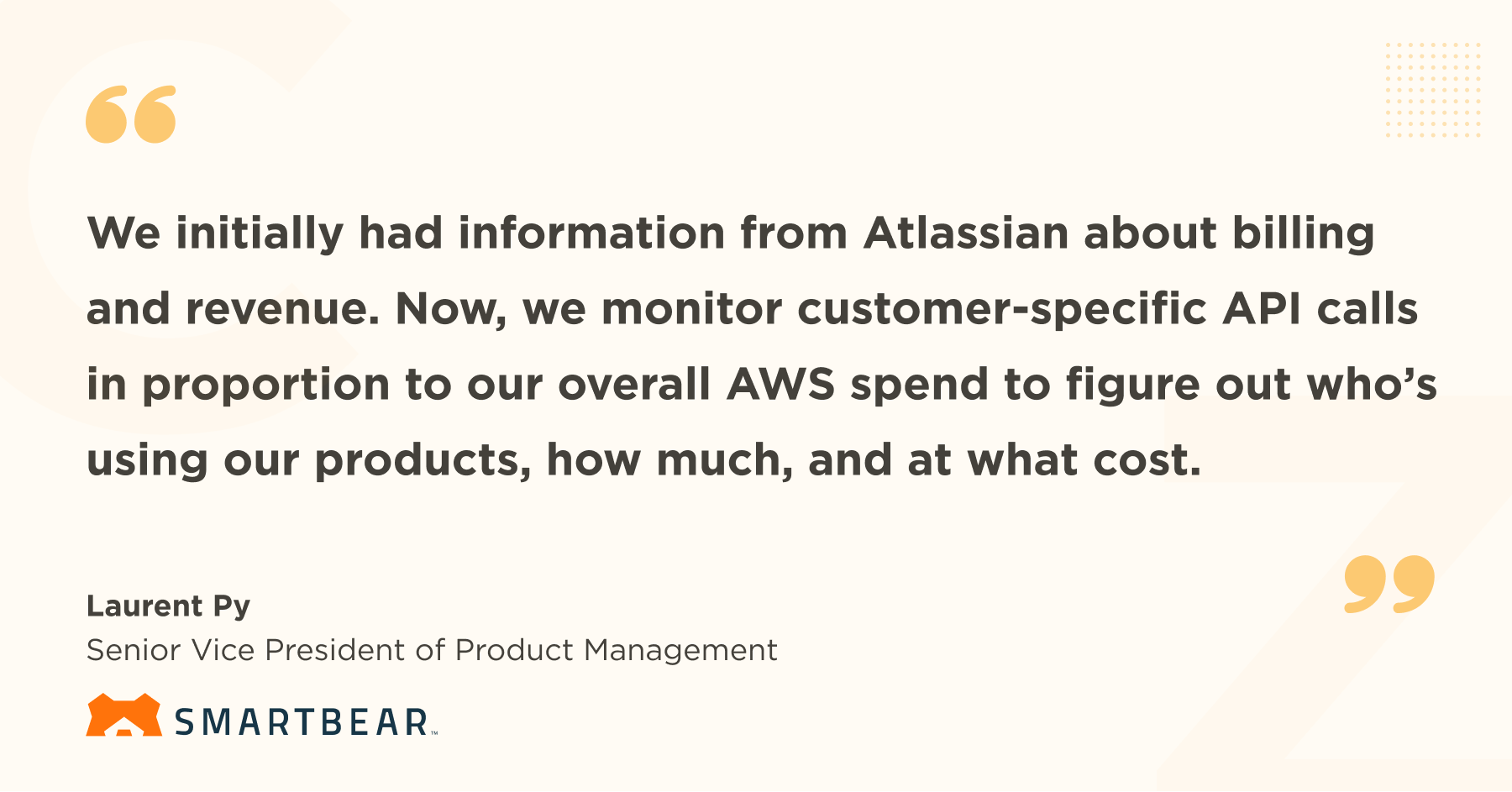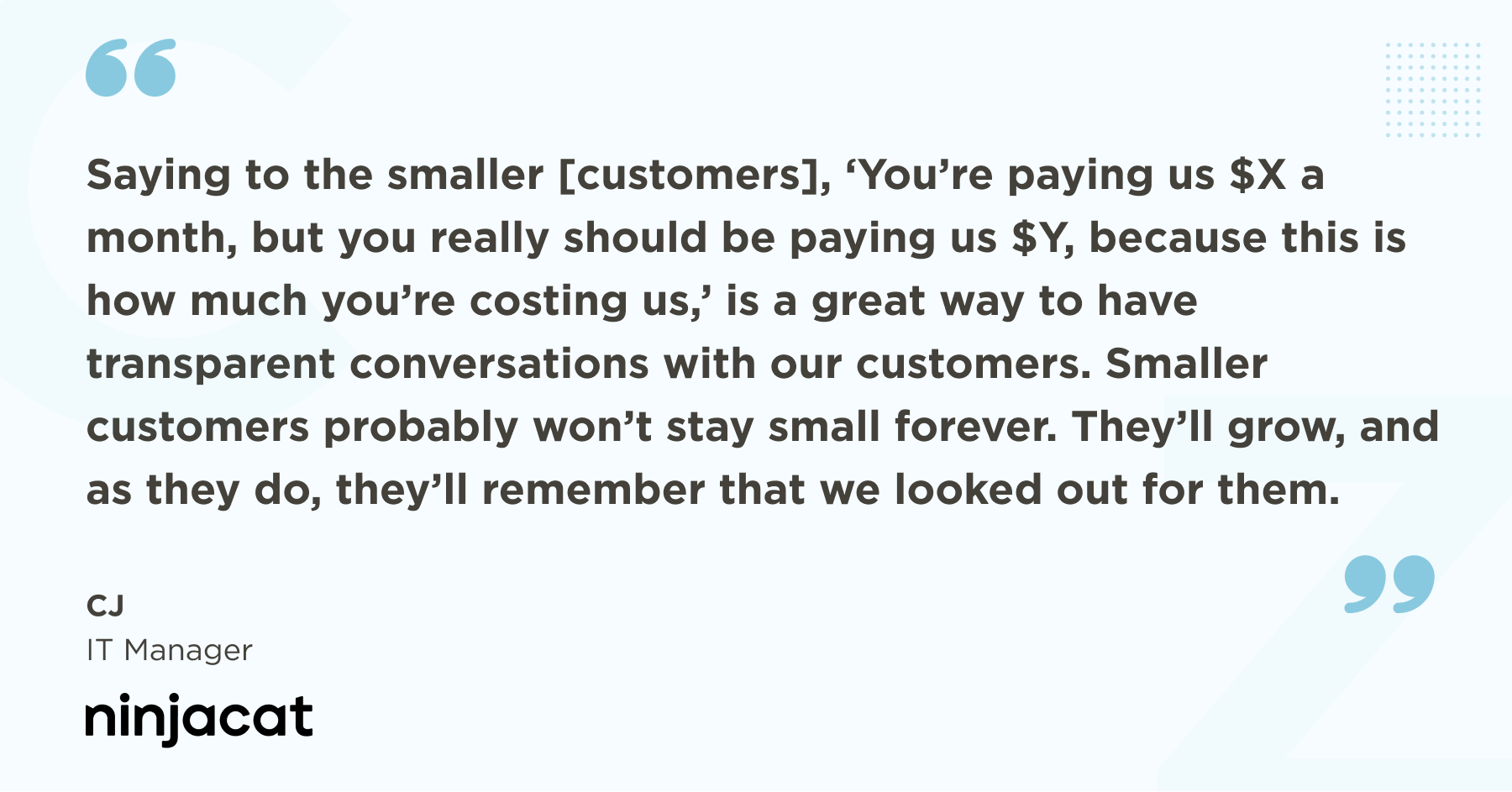One powerful way SaaS companies can balance their own costs while still providing plenty of value to their customers is to be strategic about pricing tiers and payment plans.
When customers can choose the service levels they want at prices they can afford, and your company is compensated for its associated cloud expenses while achieving a healthy profit, you know you’ve done it right.
If any of those factors fall out of balance, a number of things could go wrong. Customers may find services unaffordable for the level of quality they provide, and service tiers might be so convoluted and nonsensical that customers have a hard time picking the right solution for their needs. Worse, some pricing tiers might lose money for the SaaS company rather than bringing in revenue.
Cloud cost intelligence is the key to maintaining a healthy balance in your pricing tiers.
If you can break your company’s costs down into meaningful categories — such as cost per customer and cost per feature — you can see what it takes to support the services you want to provide within your chosen customer demographic. With this information, it becomes simpler to build sensible pricing tiers and payment plans that provide value for all parties involved.
Here are a few creative ways CloudZero customers have used cloud cost intelligence to improve their pricing models.
1. Balance Profit Margins And Avoid Losing Money
Even before implementing CloudZero, SmartBear knew they needed more customer cost data to accurately build out their pricing tiers.
They could tell they were leaving money on the table somewhere — margins weren’t where they should have been, in some cases — but without a complete picture of their cost per customer, it was impossible to nail down exactly where the problems were.
Even though SmartBear works with a wide range of customer segments — from small accounts using the free tier to enterprise clients with hundreds of thousands of members — they were able to configure CloudZero to gather data from all of their myriad accounts in under an hour.
Once they had the in-depth cost per customer information they had been looking for, they were able to redesign their pricing tiers to balance costs with revenue and keep margins where they wanted them.
“We initially had information from Atlassian about billings and revenue,” says SmartBear’s Senior VP of Project Management, Laurent Py. “Now, we monitor customer-specific API calls in proportion to our overall AWS spend to figure out who’s using our products, how much, and at what cost.

“Having CloudZero really helps us understand cost per customer. In turn, that lets us understand multiple segments of customers, including their size and the markets they’re in. When we have information around our customer base, it lets us understand pricing, improve our margins, manage EBITDA, and optimize our business as a whole.”
2. Market Specific Service Tiers To Profitable Customer Segments
When ResponseTap began working with CloudZero to determine their unit cost, they quickly found that some of their smallest customers were (surprisingly!) the source of the healthiest profit margins.
This was somewhat counter-intuitive, because often the largest customers bring in the most revenue on paper. What some companies forget to factor in, however, is that the increased costs from large customers can eat away at profit margins.
CloudZero allows ResponseTap to measure the cost to support each of their large enterprise customers, and even compare the cost of different segments. “We can see that a group of customers in a certain vertical tend to be really profitable even though they’re small — while another vertical who we may bill for a similar amount actually costs us more,” explains Greg Farrow, ResponseTap’s Principal Technical Architect.
Now, “one area where we’re going to be able to be much more insightful is our smaller customers.” ResponseTap has pivoted to target these profitable customers more heavily, which gives them the necessary cushion to continue supporting their more expensive enterprise customers.
3. Maximize The Value Gained From Each Customer Segment
NinjaCat needed a way to scale more effectively without wasting money on unnecessary costs. They had experienced a period of rapid growth, but their costs had snowballed alongside that growth, and it wasn’t clear if all those price increases were matched by revenue or not.
With information gained from CloudZero, NinjaCat rebalanced their pricing tiers to stop some of the bleeding that was happening due to rapid growth. They were also able to spark some honest conversations with some of their customers.
NinjaCat’s IT Manager explains the basis behind their decision to be as open about pricing as possible: “Saying to the smaller ones, ‘You’re paying us $X a month, but you really should be paying us $Y because this is how much you’re costing us,’ is a great way to have transparent conversations with our customers. Smaller customers probably won’t stay small forever. They’ll grow, and as they do, they’ll remember that we looked out for them.”

This transparency allowed NinjaCat to begin charging appropriately for heavy users, which in turn meant they could offer lower prices to smaller customers.
Find Your Ideal Pricing Strategy With CloudZero
CloudZero’s cloud cost intelligence platform is the easiest way to get a granular, detailed analysis of your cloud cost per customer without manual tagging and calculations.
In just a few hours, you could have all the information you need to completely rebuild your pricing tiers and customer marketing strategies to be more profitable. Better still, our experts are always happy to help you use your company’s unit economics to save money and boost revenue.









